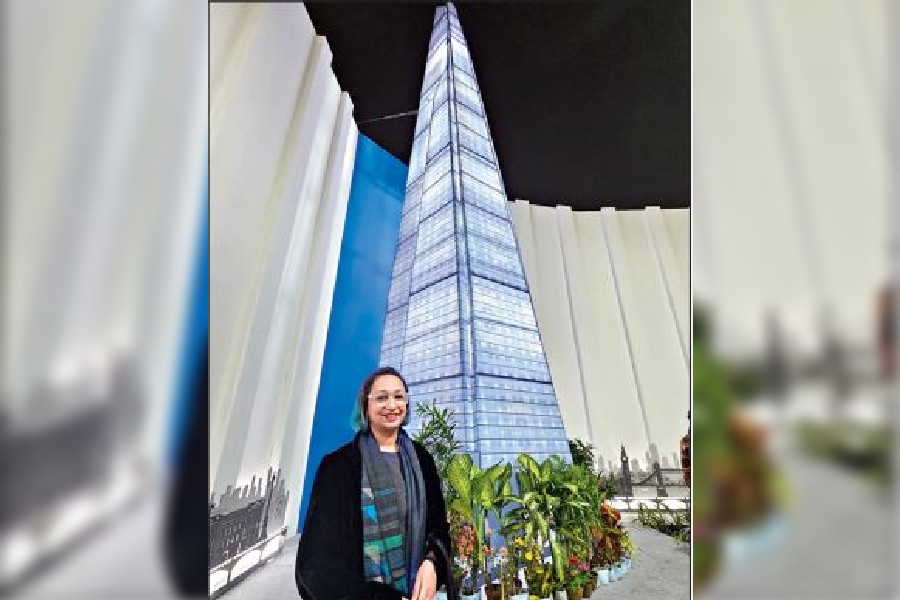One of the popular backgrounds for visitors to click pictures against at the Book Fair were the two mini replicas of The Shard by the entrance and the exit gates of the stall of Great Britain, which this year was the focal country.
So it was appropriate that the British authorities had flown over Roma Agarwal, who had worked on the design of the original — Western Europe’s tallest tower, The Shard — from the UK.
“I was born in Bombay and have lived in the UK for 25 years now,” said the structural engineer, while posing in front of the replica on request from The Telegraph Salt Lake. She was “surprised and happy” to see the 37ft structure, which had acrylic and vinyl printing on an iron cast structure, at the book fair. In comparison, the original stands at a height of 1,016ft and required a top-down construction methodology to build. She had spent six years on it.
At the SBI auditorium the next day, on January 19, she delivered an address on “How a nail built the world”, drawing from her new book Nuts & Bolts: Seven Small Inventions that Changed the World (in a Big Way), published in 2023.
“It is my third and focuses on seven inventions that had a big impact, nail being one and magnet, lens, string and pump being some of the others. I drew up the list during the pandemic. We should learn to be excited about the simple inventions also,” she said.
Her first book was Built: The Hidden Stories Behind Our Structures (2018), in which she looked at how construction had evolved from mud huts to skyscrapers. “I wrote a children’s version of the book and called it How was that Built? in 2021, exploring the challenges of building long and deep things like bridges and tunnels.”
The engineer, who was appointed a Member of the Order of the British Empire in 2018, has since been presenting her work to school children and university students, raising awareness about engineering.
She admits that for an author writing for the general public, she comes from an unusual background. “Having practised for 14 years as a structural engineer, I bring a unique perspective to my writing. Engineering is not a diverse profession, with women forming barely 12-14 per cent. On top of that, I belong to an ethnic minority,” she said.
As an author, Agarwal said she focused on history and liked to tell stories of engineers and inventors people might not have heard of. “Jagadis Chandra Bose never patented his work as he did not believe in gate-keeping his knowledge,” she said, in response to The Telegraph Salt Lake’s mention of Marconi being credited as the inventor of radio wave based wireless telegraph, and not Bose.
On her way into the city from the airport, she had seen the Big Ben replica in Lake Town on VIP Road.“The scale and the details were admirable. And I was delighted to see it was even lit up from inside,” she smiled.
